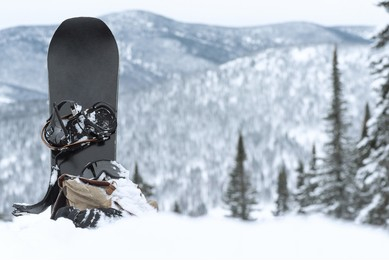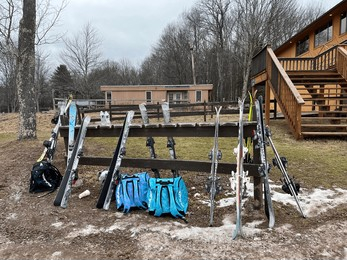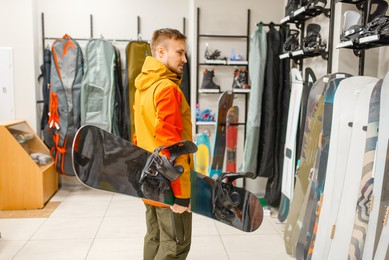Imagine this: You’ve been waiting all year for the winter season and finally, the first snow of the year has arrived. You’re excited to hit the slopes but getting all of your snowboarding gear together can be a daunting task. What’s even more daunting is figuring out how to carry everything to the mountains. Having the right bag to transport your snowboard is crucial for a successful and stress-free trip. That’s where snowboard bag sizes come in. Knowing which size to choose can make all the difference in the world.
The most common snowboard bag sizes fall within the range of 12 inches to 13.5 inches in width, 5 inches to 8.5 inches in height, and 55 inches to 60 inches in length, there are many different sizes available depending on the intended use.
In this blog post, I will take a deep dive into the world of snowboard bag sizes, why it’s crucial to choose the right one for your needs, and how it can make your winter trip a breeze
Standard Snowboard Bag Sizes

Standard snowboard bags come in different sizes to fit various snowboard lengths. The three most common sizes are 146cm-156cm, 157cm-166cm, and 167cm-181cm. Here is an overview of these sizes and which snowboards are suitable for each size:
1. 146cm-156cm:
This size is designed for smaller snowboards suitable for kids and women. It is perfect for freestyle and park boards because they tend to be shorter and more flexible, making them easier to maneuver. This is the bag size you should get if you have a shorter board or a smaller frame.
2. 157cm-166cm:
This size is the most common form of snowboard bag and fits most standard snowboards. It is ideal for all-mountain boards, which are versatile and can be used in different terrains. This size is a safe bet if you have a medium-sized board or plan to travel extensively.
3. 167cm-181cm:
This size is ideal for larger snowboards, such as freeride or powder boards. These boards are bigger and often have a wider shape, making them challenging to transport. If you have a longer board or plan to take on backcountry snowboarding, this bag size will accommodate your needs.
Measuring your snowboard to determine the bag size you need is simple. Start by measuring the length of your snowboard from tip to tail. Round this number up to the nearest centimeter.
For example, if your board is 155.2cm long, round it up to 156cm. Once you know your board’s length, choose a snowboard bag size that matches or exceeds this length. Remember, having a slightly larger bag is better than a smaller one as it will provide more wiggle room and protection for your snowboard.
Types of Snowboard Bags

Below, I have discussed each bag size in more detail.
High Roller
For snowboarders who need ample space to transport their gear, the Dakine High Roller Snowboard Bag is a top choice. This bag offers exceptional functionality and versatility, making it one of the most sought-after options on the market. Notably, it’s the largest snowboard bag available, giving you plenty of room to pack all the essentials you need for extended trips to your favorite snowboarding destination. With its superior design and ample storage capacity, the Dakine High Roller Snowboard Bag is the perfect companion for any snowboarding enthusiast.
You’ll be pleased to know that it’s available in two different sizes. The first size is 165 centimeters, which is equivalent to 70 inches, while the second size is 175 centimeters or 74 inches in length.
Low Roller
The Dakine Low Roller Snowboard Bag is an excellent choice for snowboarders who want a compact bag to transport their gear without sacrificing protection. Although it’s smaller than the High Roller Bag, it still provides ample space for your snowboard and essential accessories.
There are three sizes available for the Dakine Low Roller Snowboard Bag. The first size is 157 cm, followed by 165 cm and 175 cm, respectively.
Pipe
You should consider the Dakine Pipe Snowboard Bag if you’re looking for a snowboard bag that prioritizes functionality. While it may not be as versatile as some of the other bags on the market, it’s specifically designed to fit snowboards of very particular sizes. This means that you can trust that your snowboard will fit snugly and securely inside the bag, without any unnecessary extra space.
Available in a range of sizes, from 148 cm to 165 cm, this bag ensures that you can find the perfect fit for your board.
Freestyle
If you’re looking for a simple and straightforward option for storing and transporting your snowboard, the Dakine Freestyle Snowboard Bag might be just what you need. Unlike the Roller Bags, the Freestyle Bag is designed primarily for storing your snowboard and doesn’t have as many additional features. However, it does come with a zippered compartment for storing smaller items, and it features a removable shoulder strap for easy carrying.
Specifically designed for snowboards measuring 157 cm and 165 cm long.
Tour
The Dakine Tour Snowboard Bag is a reliable and versatile option for carrying your snowboard and accessories. It has various sizes available and features comfortable straps and handles for easy carrying. Despite not having wheels, it’s still well-made and functional.
With three different sizes available – 157 cm, 165 cm, and 175 cm – you can choose the perfect fit for your gear.
Choosing the Right Bag

When it comes to snowboarding, having the right gear is essential, and that includes the right bag to transport your snowboard. Snowboard bags come in different types, each with its own set of features that cater to different preferences and needs. Here’s an overview of the different types of snowboard bags available:
- Wheeled bags: These bags come with wheels and a retractable handle, making it easy to transport your snowboard through airports and other public transportation areas. They typically have multiple compartments for gear and are more durable, making them ideal for international travel.
- Backpack-style bags: Backpack-style bags are ideal for shorter trips, such as a weekend getaway or a day trip. These bags offer a more comfortable and easier way of transporting your snowboarding equipment, especially when commuting by public transportation.
- Padded bags: Padded bags come with extra padding, which provides enhanced protection to your snowboard during transportation. They are great for air travel, as they provide extra protection during baggage handling.
When choosing a snowboard bag, it is essential to compare different brands and models based on features like durability, weight, and price. Some of the brands that offer high-quality snowboard bags include Burton, Dakine, and Thule. Durability is essential when it comes to snowboard bags, especially since they need to withstand rough handling during transportation. Some bags are lightweight and easier to carry, while others have more storage compartments.
FAQs
How do I know what size snowboard bag to get?
To know what size snowboard bag to get, measure the length of your snowboard and add a few inches to accommodate bindings, boots, and other gear that you may want to pack along with your board. You can find snowboard bags in various lengths to suit different board sizes.
How many inches is a snowboard bag?
The length of a snowboard bag varies depending on the size of the bag. Generally, it can range from 145cm up to 200cm or more. You should choose a bag that is at least a few inches longer than the length of your snowboard.
How do I know my snowboard size?
You can know your snowboard size by checking the dimensions of your board. This information can usually be found on a sticker or label on the board itself. The width and length of the board are typically measured in centimeters or inches.
How do you pack a snowboard in a bag?
To pack a snowboard in a bag, first, remove the bindings and separate them from the board. Place the board in the bag with the base facing down and the nose of the board at the bottom of the bag. Stuff any additional gear, such as boots, goggles, and gloves, around the board to protect it during transport. Finally, zip up the bag and secure any straps or buckles to keep everything in place.